Origins, Rations, Extractions
Oct 5, 2017–Jan 7, 2018
Image Gallery
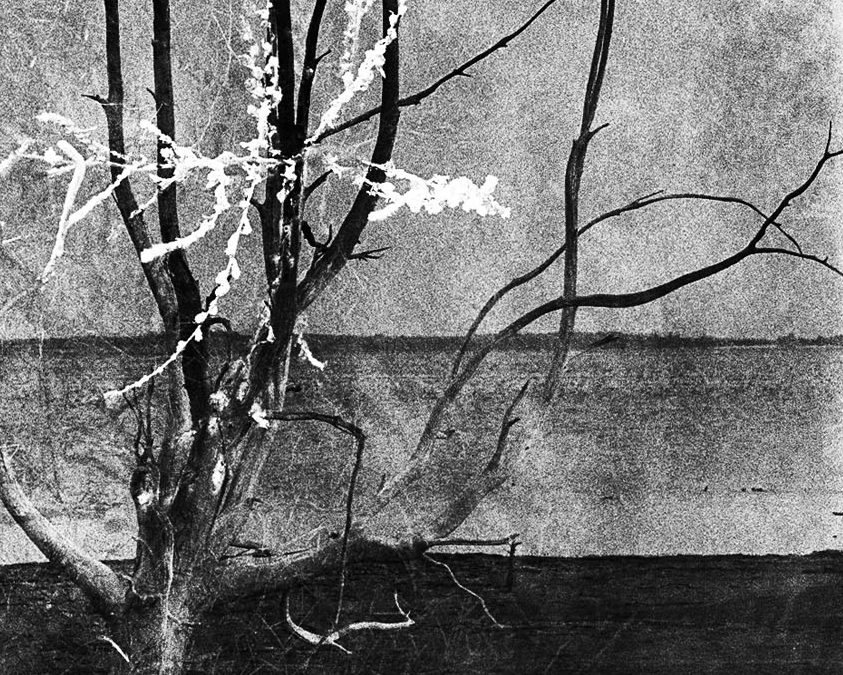
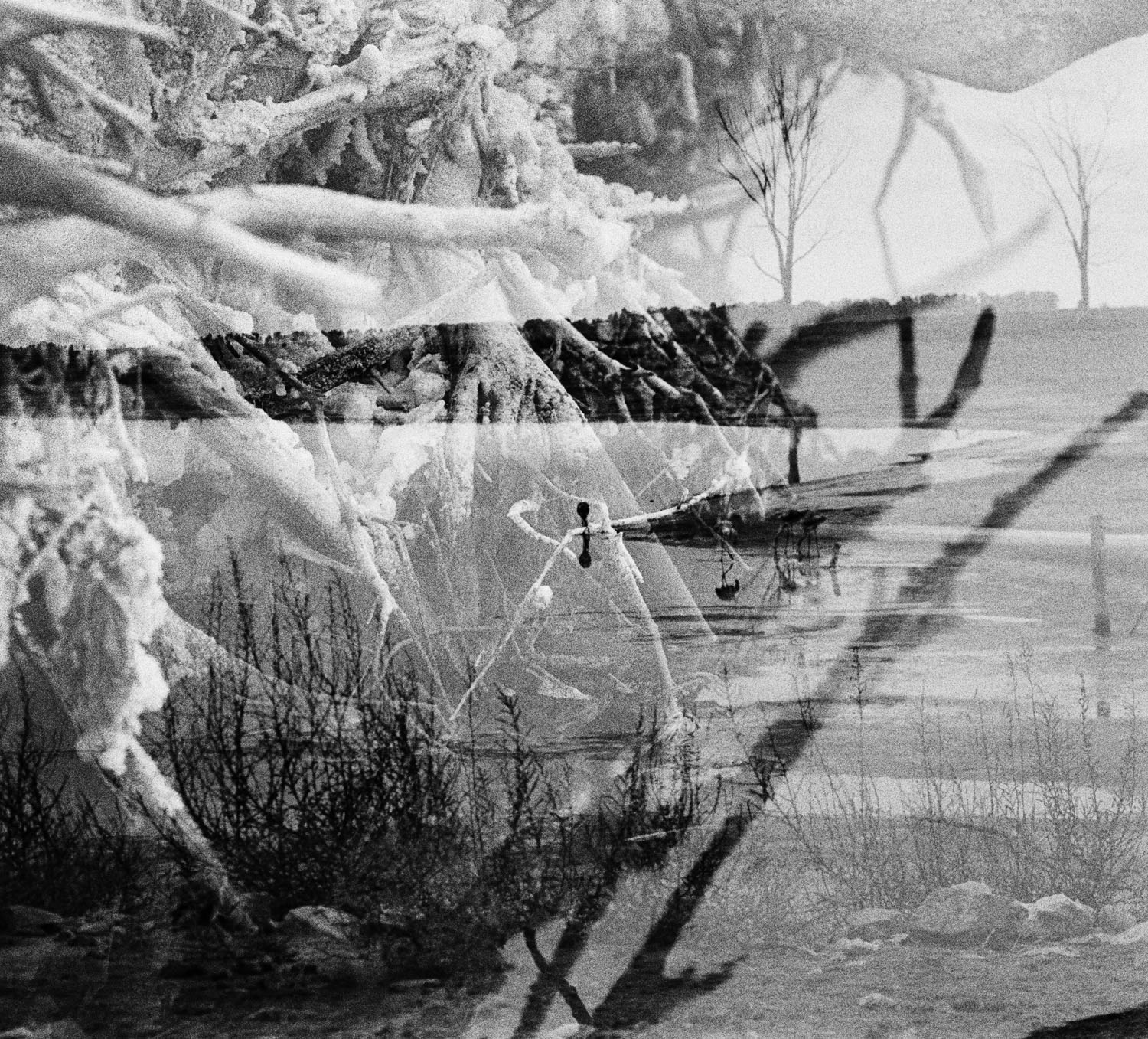
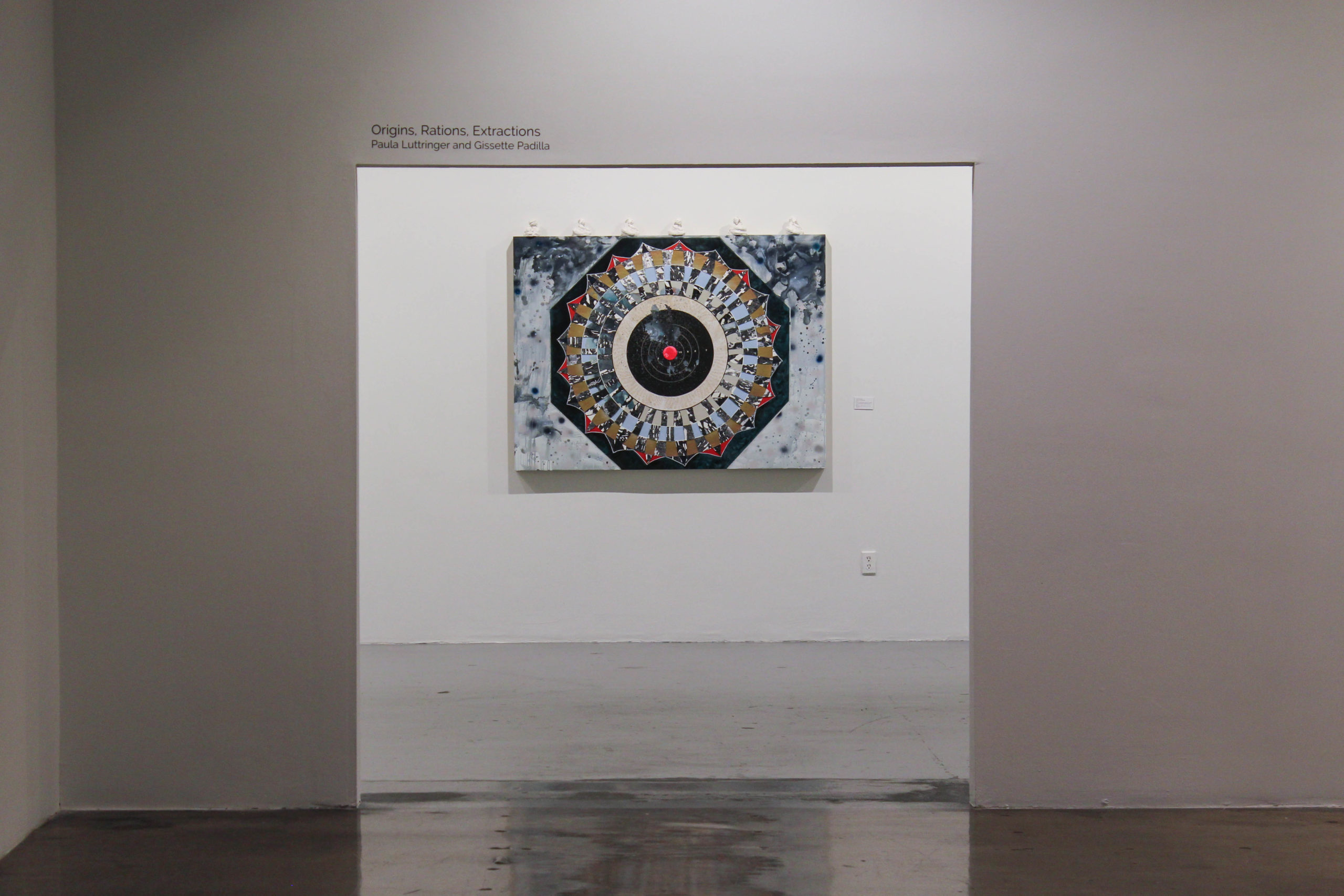
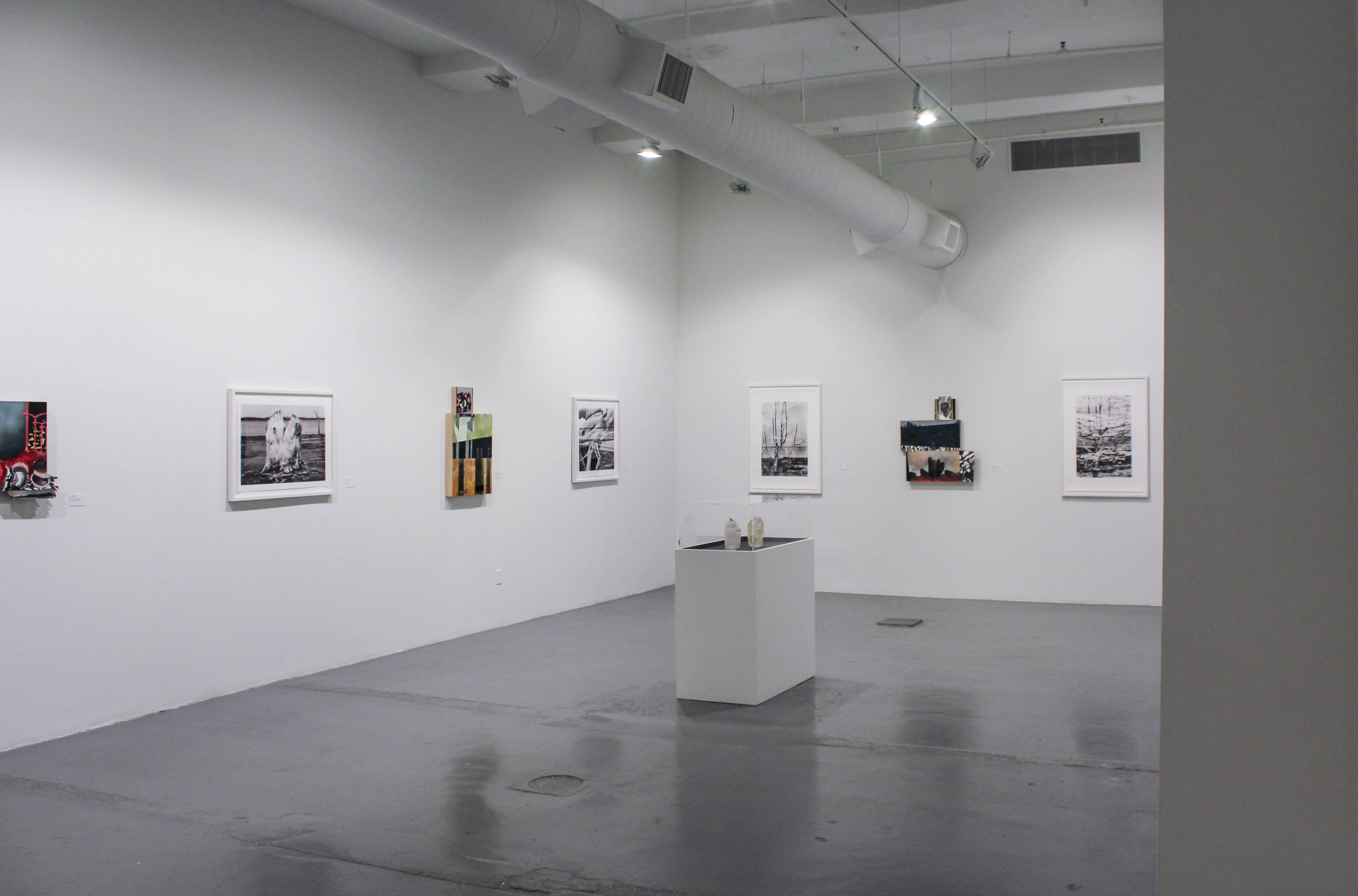

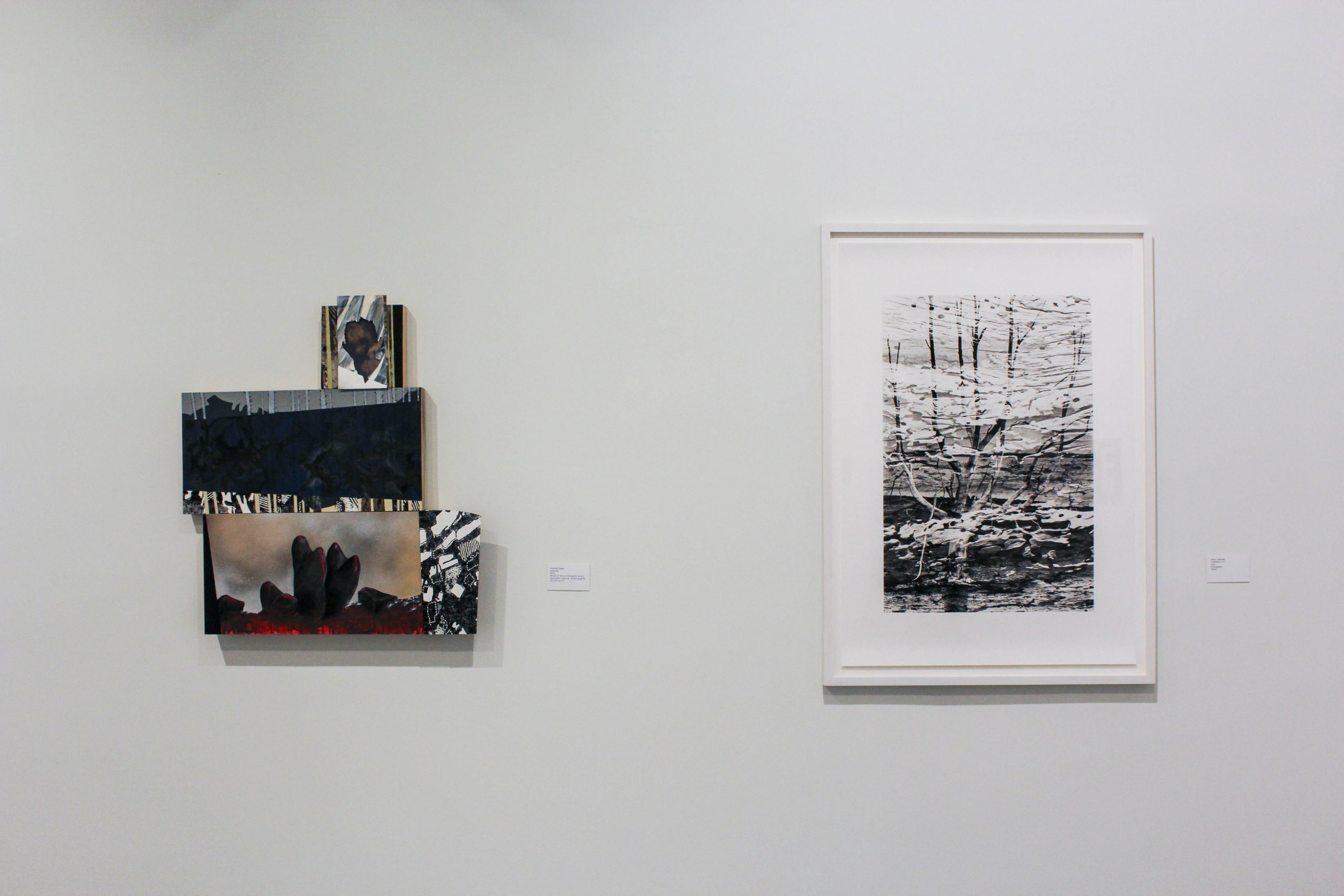
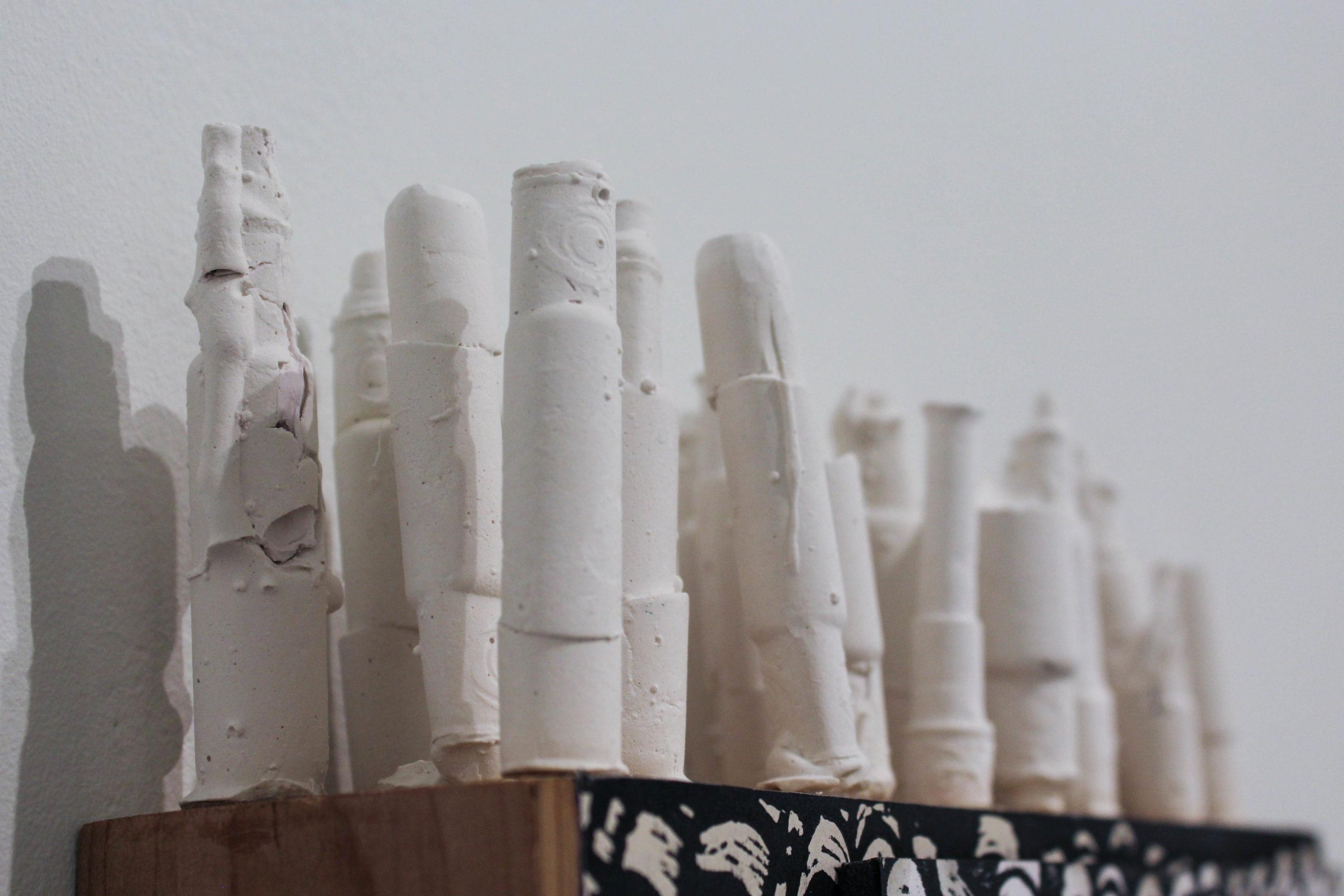
Origins, Rations, Extractions
Oct 5, 2017–Jan 7, 2018
Origins, Rations, Extractions
About the artists:
Gissette Padilla was born in Coro, Falcon, Venezuela. She moved to Houston, Texas, at the age of 8. She received her BFA from The University of Houston in 2008 and her MFA from the University of Texas at San Antonio in 2011. Her works consist of a combination of drawing, painting, and various printmaking techniques. Her work has been exhibited in a number of exhibitions in Houston, San Antonio, Boston, Kentucky, Sequin, and Austria. She has participated in several residencies including, Many Mini Residency at Skydive, Sunblossom Residency, and Sojourn Residency.
Argentinian photographer Paula Luttringer was born in 1955 and produces work focused on the history of her native country and lives of those disenfranchised and victimized by its political powers. In 1977 Luttringer experienced this firsthand when she was kidnapped and held in a secret detention center during the Argentine military war (1976-1983) and was held as a political prisoner in one of the more than 520 secret detention centers in Argentina. Leaving Argentina immediately after her release she fled to Uruguay and then Brazil, before going to France and did not return to Argentina until 1995, when she began using photography to interpret her experience there and as an approach to recovery.
Dialogues and confrontations with testimonies and witnesses are essential elements in Luttringer’s work. Luttringer was awarded a fellowship from the Guggenheim Foundation in 2001. Her work appears in the collections of the Museo Nacional de Bellas Artes, Buenos Aires; Museum of Fine Arts, Houston; and George Eastman House, Rochester, NY. She currently lives and works in Buenos Aires and France. In 1999, at the PhotoEspaña Festival in Madrid, she won the first prize for the best portfolio for her project “El Matadero” (The Slaughter House). In the same year, she was named one of the “Discoveries of the Meeting Place” at the FotoFest in Houston (TX, US). In 2011 she became a John Simon Guggenheim Memorial Foundation Fellow and the following year was awarded the National Art Fund of Argentine Artist Fellowship.
“I am a visual artist creating images related to my experience as a survivor of political violence. My work arises from an era in history that is specific to Argentina but has features in common with political violence wherever it erupts in the world.
Survivors of political violence have blank spaces in our memories, and sometimes we get unexpected flashes of memory. The flashes are not words but images, mental pictures. They don’t come when we want them to come. We can’t erase the mental pictures that arrive, and we can’t change them. If we try to not see them, they insist. The flashes arrive when we are relaxed, having good moments in our lives. They appear when we are working on other things, when we are not expecting them. These flashes are images that exist in our minds and cannot be shared with anyone.
Photography allows me to create images that suggest what is in my mind. The photographs are not illustrations of what is in my mind, but they are reminders, suggestions. Unlike flashes of memory, photographic images can be shared with others. When I create photographic images, I am finding a way to keep the past which was not recorded, the past which was hidden, the past which intrudes into the present. And so photography is part of my quest to explore my gaps in memory, my memories, and those unexpected flashes of memory.”
About Gissette’s work in Origins, Rations, Extractions
The work stands in the intersection of formalist abstraction and social commentary. As an Immigrant from Venezuela my identity falls heavily in the political and personal circumstances my family was under to leave their home and start a new one. While my extended family continues to live there, we hear firsthand how they deal with the uncertainty, food shortage, crime, and unrest. These events may not be as extreme here but are commonplace in a lot of other countries. Venezuela’s heavy political instabilities aren’t new to our histories but are a clear reflection of our complex society.
My goal is for the work to feel a little tense, complicated, but subtle. I’ve often used a lot personal family images in my work and continue to do so along with text from protest chants. I’m also using images and stories I find in articles about the recent protest, the declining economy, and the everyday news to inform the work.
\Using painting, drawing, and various printmaking techniques, I construct multi-layered images that evoke the experience of a bystander and the protester. The work is an amalgamation of real, distorted, and perceived experience built from fragments of personal photographs, memories, and current found images. Visually representing both the construction and crumbling of the society. Red hues are used throughout to mark the association with the extreme. The pieces beg the question how political oppression alters individual and cultural identity.
The history of my process in constructing my work is an important element. To be able to see through the layers of the work washes; pattern, and line combine together yet retain their individual identity. The work walks the line between figurative, representational, and abstract art. With the use of pattern, color, and line, I am able to create a space that visually represents how these events might look over time with missing parts and images overlapping each other. Reimagining and decontextualizing the familiar into abstracted forms give the effect of a mix of unresolved political unrest with a calming formal logic.
About Paula’s work in Origins, Rations, Extractions
Paula Luttringer’s photographs in Origins, rations, extractions are selections from two bodies of work Lingnum Mortuum and Entrevero
Lignum Mortuum<
Lago Epecuen is one of saltiest lakes on earth. Indigenous people knew the healing properties of the waters and took their horses there to heal them. The dictatorship of the 1970s not only destroyed the lives of people, it also destroyed parts of the eco-system of Argentina and laid waste to forests and animals. During the dictatorship, the infrastructure of the region was neglected and in 1985, after a season of heavy rains, flood waters broke through the neglected dam and Epecuen was suddenly inundated. Within days the whole town disappeared under ten meters of salty water. Epecuen remained beneath the surface of the salt lake for over twenty years, until in 2009 shifting weather patterns led to a drought. Suddenly a ghost town appeared beneath the receding waters.
In 2015 I began to photograph the tree trunks of Epecuen baked white like bones in a desert and glistening with salt crystals. When I saw the contacts for these photographs, I realized what I was seeing: a forest of trees that seemed to be walking forward while dead. The trees speak to me of the way people who have suffered trauma stride forward in their lives, embodying movement while some part of them has died.<
Entrevero
While I was working on my project Lignum Mortuum, fortuitously I made some double exposures. Later I returned to the contact sheet, curious about those tangled images. I saw different worlds superimposed on each other, haunted landscapes of broken trunks and unearthed roots layered texturally on each other as memory is layered. The word for these images that comes to me in Spanish is <entrevero, a word that has many meanings. It can mean confusion, disorder, a gaucho’s brawl. I see the double exposures layered on each other, twisted around each other and entwined as in an entrevero. Chaos or chance played a role in the creation of these images. They are my nightmares morphed, nightmares no longer inside me, but outside in these photographs.